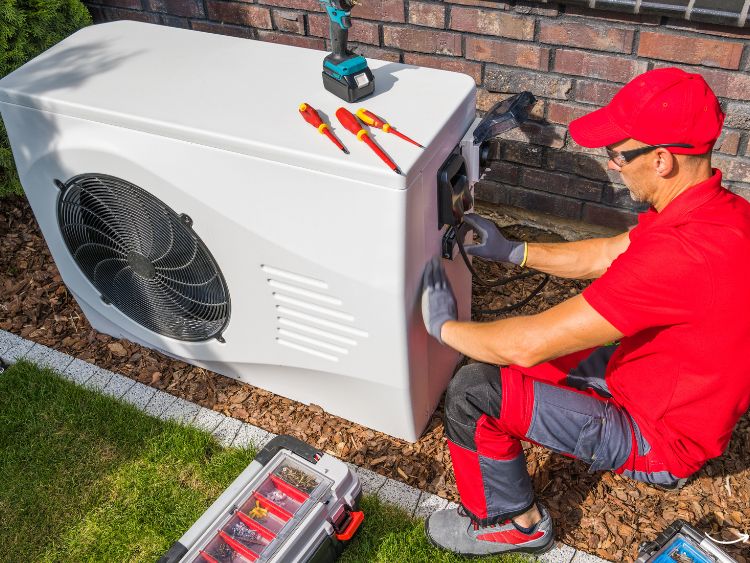In the ever-evolving world of HVAC (Heating, Ventilation, and Air Conditioning), UV light has emerged as a powerful tool for improving air quality and system efficiency. If you’re wondering what UV light can do for your HVAC system, you’re in the right place. This comprehensive guide will dive into the benefits, workings, and practicalities of integrating UV light into HVAC systems.
What is UV Light and How Does It Work?
Before we delve into the specifics of UV light for HVAC systems, let’s get a quick grasp on what UV light is and how it operates. Ultraviolet (UV) light is a type of electromagnetic radiation with a wavelength shorter than that of visible light but longer than X-rays. It’s commonly divided into three categories:
- UV-A: Long-wave UV light (315-400 nm)
- UV-B: Medium-wave UV light (280-315 nm)
- UV-C: Short-wave UV light (100-280 nm)
For HVAC purposes, we focus on UV-C light. This particular spectrum is highly effective at killing or inactivating microorganisms by damaging their DNA and RNA, thereby preventing them from reproducing and spreading.
Why UV Light for HVAC Systems?
1. Improved Air Quality
The primary benefit of UV light in HVAC systems is its ability to enhance indoor air quality. UV-C light targets airborne pathogens such as bacteria, viruses, and mold spores, which are common culprits of poor air quality. By neutralizing these microorganisms, UV light helps maintain a cleaner, healthier indoor environment.
2. Enhanced System Efficiency
UV light doesn’t just purify the air; it also boosts the efficiency of your HVAC system. Microbial buildup on HVAC coils and other components can reduce system efficiency by hindering heat exchange processes. UV light eliminates this buildup, ensuring the system operates smoothly and efficiently.
3. Cost Savings
Improved efficiency translates into cost savings. An HVAC system free of microbial growth uses less energy, leading to lower utility bills. Additionally, by maintaining cleaner components, UV light can extend the lifespan of the HVAC system, reducing the need for frequent repairs and replacements.
Installing UV Light in HVAC Systems
1. Types of UV Light Systems
There are two main types of UV light systems used in HVAC applications:
- Coil Sterilization: A UV-C light is installed near the HVAC coils. It continuously shines on the coils, preventing the growth of mold and bacteria.
- Air Sterilization: This involves installing a UV-C light within the return air duct. As air passes through the duct, the UV light sterilizes it, reducing airborne contaminants.
2. Installation Process
The installation of UV light in HVAC systems should be done by a professional to ensure safety and effectiveness. The process generally involves:
- Assessment: Evaluating the HVAC system to determine the best type and placement of the UV light.
- Installation: Properly mounting the UV light system in the chosen location.
- Testing: Ensuring the UV light system is functioning correctly and effectively covering the intended area.
Safety Considerations
While UV light is a potent tool, it comes with safety considerations. UV-C light can be harmful to skin and eyes, so proper shielding and safety measures are crucial during installation and maintenance. Additionally, the use of UV light should comply with local regulations and standards.
FAQs about UV Light for HVAC
Q: How often should UV lights be replaced? A: UV-C bulbs typically need replacement every 12-24 months, depending on usage and manufacturer recommendations.
Q: Can UV light eliminate all airborne contaminants? A: While UV light is highly effective against microorganisms, it doesn’t remove particles like dust and pollen. It should be used in conjunction with high-quality air filters.
Q: Is UV light safe for all HVAC systems? A: Most modern HVAC systems can accommodate UV light installations, but it’s essential to consult with a professional to ensure compatibility.
Q: Does UV light increase electricity consumption? A: UV light systems consume minimal electricity and the energy savings from improved system efficiency generally outweigh the power usage.
Conclusion
Integrating UV light into your HVAC system offers numerous benefits, from improved air quality to enhanced system efficiency and cost savings. By understanding the workings and advantages of UV light, you can make informed decisions to optimize your HVAC system. Always consult with a professional for installation to ensure safety and effectiveness.
Incorporating UV light into HVAC systems is a forward-thinking approach to maintaining a healthy, efficient, and cost-effective indoor environment. Whether you’re looking to reduce airborne pathogens or boost your HVAC system’s performance, UV light is a shining solution.



